Why Sepedi Traditional Attire Should Be Preserved and Promoted
Why Sepedi Traditional Attire Should Be Preserved and Promoted
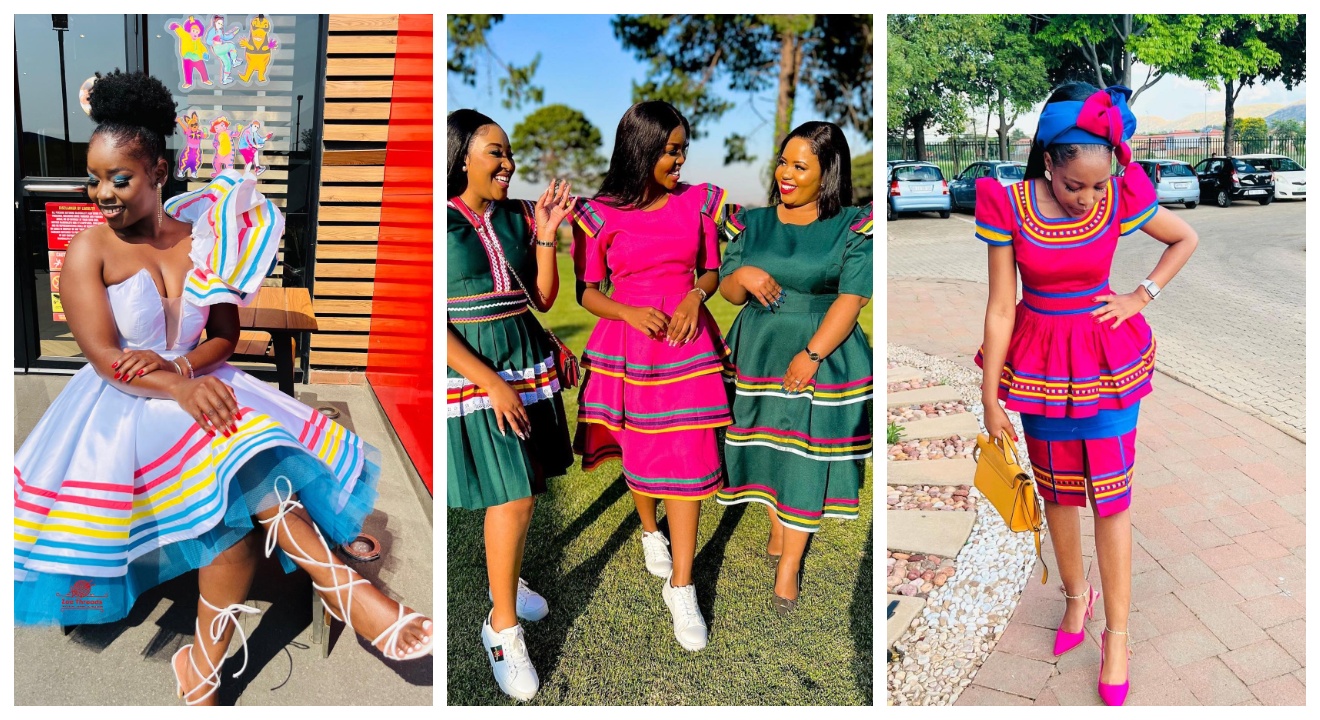
Introduction
When it comes to cultural heritage, preserving and promoting traditional attire holds immense significance. This is especially true for the Sepedi community, whose traditional attire represents their rich history, identity, and values.
Importance of preserving and promoting Sepedi traditional attire
- Cultural Identity: Sepedi traditional attire plays a vital role in preserving the cultural identity of the community. It serves as a visual representation of their heritage, allowing them to connect with their roots and pass down traditions to future generations.
- Community Pride: Wearing Sepedi traditional attire instills a sense of pride among community members. It symbolizes unity, belonging, and a shared history, fostering a strong sense of community spirit.
- Economic Empowerment: Preserving and promoting Sepedi traditional attire can have positive economic implications. By supporting local artisans and businesses that create these garments, it stimulates economic growth within the community and preserves traditional craftsmanship.
- Tourism and Cultural Exchange: Sepedi traditional attire serves as a unique attraction for tourists interested in experiencing diverse cultures. By promoting and showcasing these garments, it creates opportunities for cultural exchange and tourism development, benefiting both the community and the wider society.
- Celebrating Diversity: Preserving Sepedi traditional attire contributes to celebrating the diversity of South Africa’s cultural landscape. It highlights the beauty and uniqueness of different cultural practices, fostering respect, understanding, and appreciation among different communities.
In conclusion, preserving and promoting Sepedi traditional attire is crucial for maintaining cultural identity, fostering community pride, supporting local economies, encouraging tourism, and celebrating diversity. By valuing and embracing these traditions, we contribute to a more inclusive and culturally rich society.
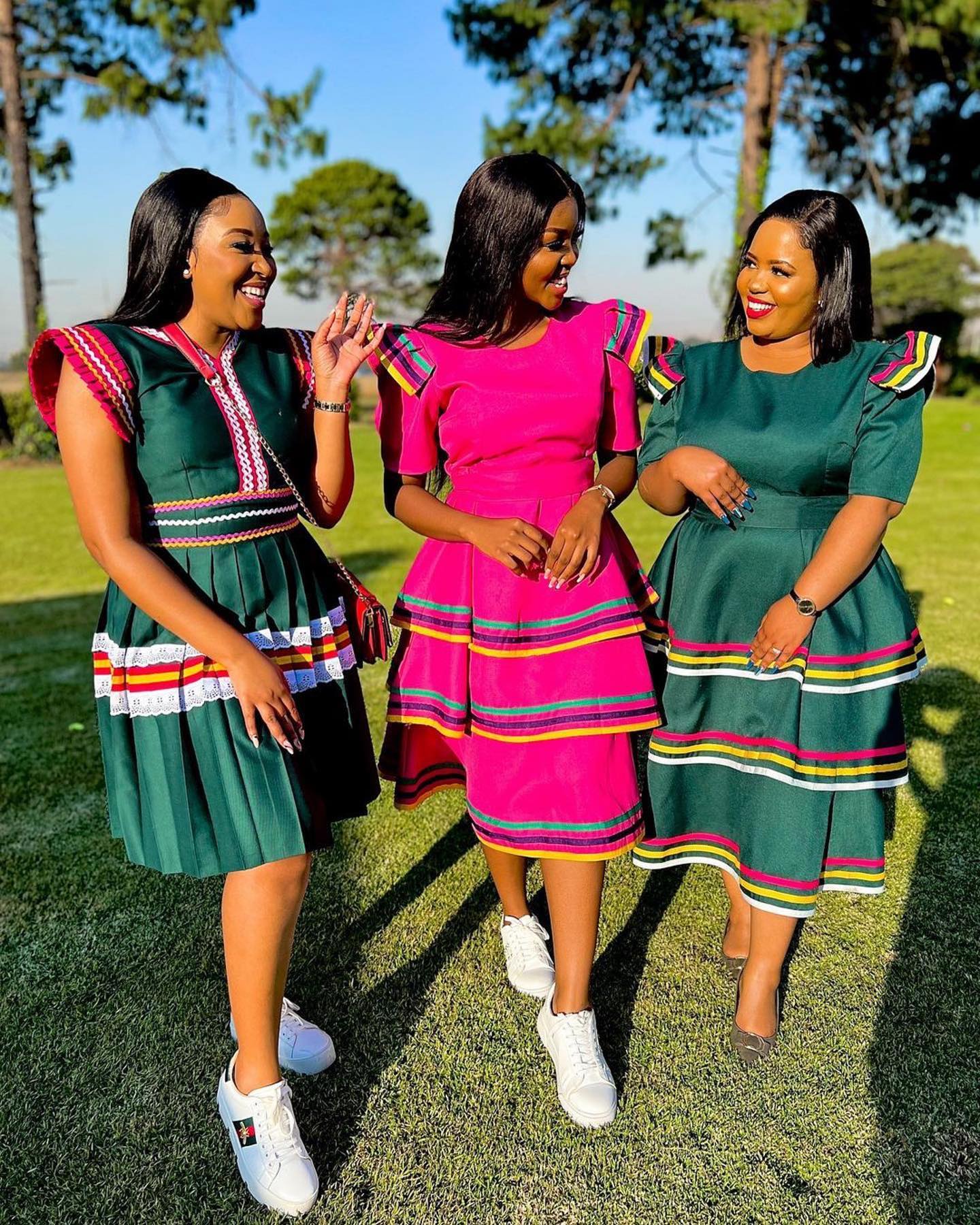


Historical Significance
The historical significance of Sepedi traditional attire
Sepedi traditional attire holds immense historical significance and should be preserved and promoted for several reasons.
- Cultural Heritage: Sepedi traditional attire represents the rich cultural heritage of the Sepedi people. It reflects their traditions, customs, and values, serving as a visual representation of their identity and history.
- Connection to Ancestors: Wearing Sepedi traditional attire is a way to honor and connect with ancestors. It is a symbol of respect for their legacy and a means to keep their traditions alive.
- Community Bonding: Traditional attire plays a vital role in fostering a sense of community and unity among the Sepedi people. It brings individuals together during cultural events, celebrations, and ceremonies, creating a strong bond and shared pride.
- Economic Empowerment: Preserving and promoting Sepedi traditional attire can contribute to the economic empowerment of local artisans and craftsmen who create these unique garments. It provides them with opportunities for income generation and sustains traditional craftsmanship skills.
- Tourism and Cultural Exchange: Sepedi traditional attire has the potential to attract tourists who are interested in experiencing different cultures. By showcasing their traditional attire, the Sepedi people can promote cultural exchange, understanding, and appreciation.
In conclusion, preserving and promoting Sepedi traditional attire is essential to honor the cultural heritage, maintain ancestral connections, strengthen community bonds, support local economies, and foster cultural exchange. It is a way to celebrate diversity and ensure that future generations continue to embrace their roots.

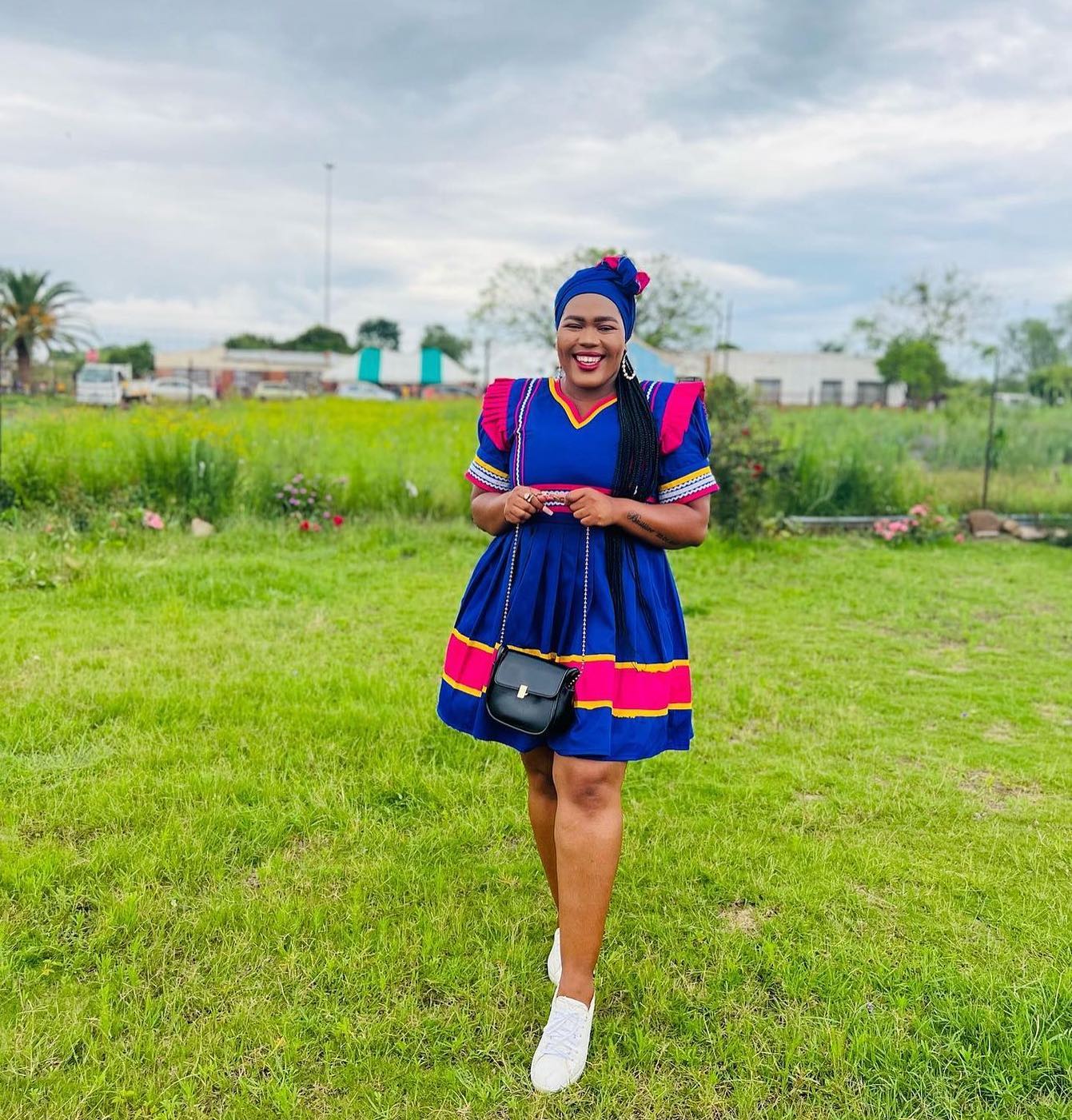

Cultural Identity
How Sepedi traditional attire reflects cultural identity
Sepedi traditional attire plays a significant role in preserving and promoting the cultural identity of the Sepedi people. The attire is a reflection of their rich history, traditions, and beliefs. Wearing traditional clothing allows individuals to connect with their roots and showcase their pride in their heritage.
The vibrant colors, intricate designs, and unique patterns of Sepedi traditional attire are a visual representation of the cultural diversity and creativity of the Sepedi people. Each garment tells a story and holds symbolic meaning, highlighting the values and customs that have been passed down through generations.
By preserving and promoting Sepedi traditional attire, the community can maintain a sense of unity and belonging. It serves as a reminder of their shared history and strengthens the bond between individuals. Additionally, wearing traditional attire during special occasions and celebrations helps to create a sense of cultural pride and fosters a deeper connection to their traditions.
Furthermore, promoting Sepedi traditional attire can contribute to the local economy by supporting local artisans and craftsmen who create these garments. It also encourages tourism as visitors are drawn to experience the beauty and authenticity of Sepedi culture.
In conclusion, preserving and promoting Sepedi traditional attire is essential for maintaining cultural identity, fostering unity within the community, and supporting local artisans. By embracing their heritage through clothing, the Sepedi people can ensure that their traditions continue to thrive for future generations.
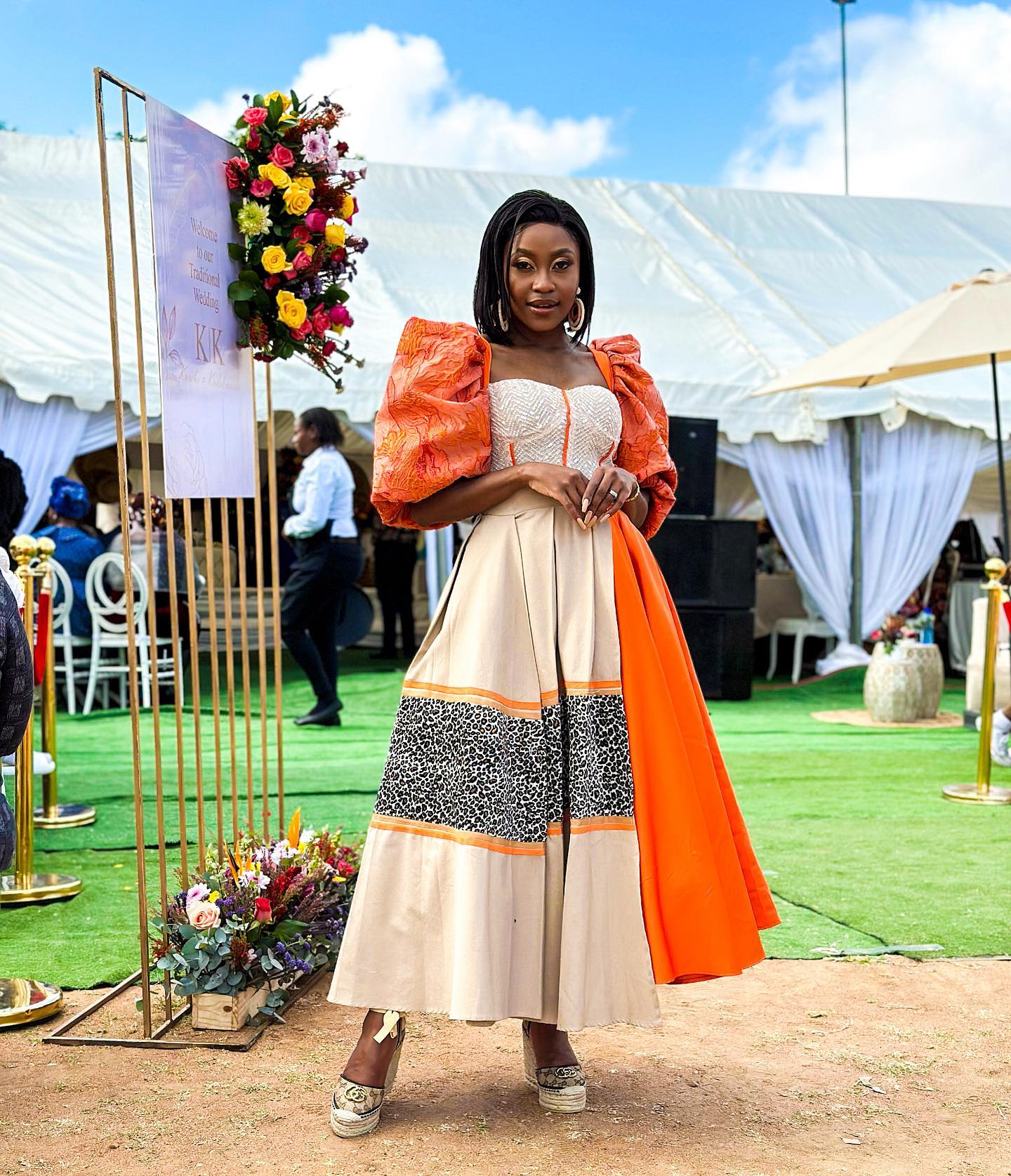
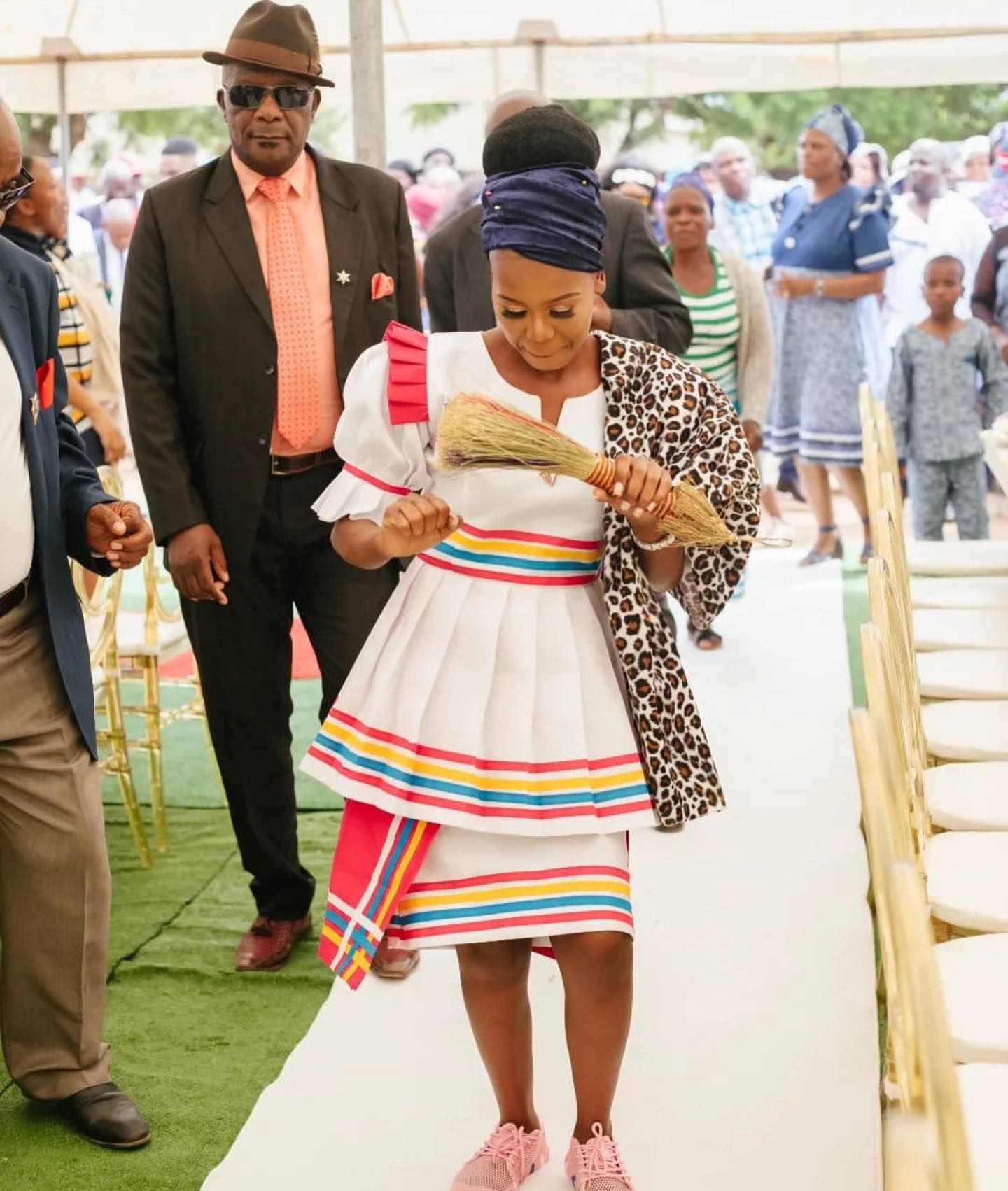

Artistry and Craftsmanship
The artistry and craftsmanship behind Sepedi traditional attire
Sepedi traditional attire is not just clothing; it is a masterpiece that embodies the rich cultural heritage of the Sepedi people. The artistry and craftsmanship behind these garments are truly remarkable, making them worthy of preservation and promotion.
The intricate designs and patterns found in Sepedi traditional attire are a testament to the skill and creativity of the artisans who create them. Each garment is carefully crafted using traditional techniques passed down through generations, ensuring that the cultural significance is preserved.
The use of vibrant colors and bold prints in Sepedi traditional attire adds to its beauty and uniqueness. These garments are often adorned with intricate beadwork, embroidery, and other embellishments, showcasing the attention to detail and dedication of the craftsmen.
Preserving and promoting Sepedi traditional attire is essential for several reasons. Firstly, it helps to keep the cultural traditions alive and allows future generations to connect with their heritage. Secondly, it creates opportunities for local artisans to showcase their talents and earn a livelihood.
Furthermore, promoting Sepedi traditional attire can also contribute to tourism and cultural exchange. Visitors from around the world can appreciate the beauty and craftsmanship of these garments, fostering a deeper understanding and appreciation for Sepedi culture.
In conclusion, preserving and promoting Sepedi traditional attire is crucial for honoring the artistry and craftsmanship behind these garments. By doing so, we can ensure that this rich cultural heritage continues to thrive and inspire future generations.
Symbolism and Meanings
Symbolism and meanings associated with Sepedi traditional attire
Sepedi traditional attire holds deep symbolism and meanings that make it important to preserve and promote. Here are some key reasons why:
- Cultural Identity: Sepedi traditional attire is a reflection of the rich cultural heritage of the Sepedi people. It represents their identity, history, and traditions, helping to preserve their unique cultural heritage.
- Unity and Pride: Wearing Sepedi traditional attire fosters a sense of unity and pride among the Sepedi community. It brings people together, strengthens bonds, and promotes a sense of belonging.
- Passing on Traditions: Preserving and promoting Sepedi traditional attire ensures that the traditions and customs associated with it are passed on to future generations. It allows younger members of the community to connect with their roots and understand the significance of their cultural practices.
- Artistic Expression: Sepedi traditional attire is a form of artistic expression that showcases the creativity and craftsmanship of the Sepedi people. The intricate designs, vibrant colors, and unique patterns represent their artistic skills and contribute to the cultural diversity of South Africa.
- Tourism and Economic Opportunities: By preserving and promoting Sepedi traditional attire, it can attract tourists who are interested in experiencing and learning about different cultures. This can create economic opportunities for local artisans, designers, and entrepreneurs involved in producing and selling traditional clothing.
Preserving and promoting Sepedi traditional attire is not only important for the Sepedi community but also for celebrating cultural diversity and fostering a sense of appreciation for different traditions in society.
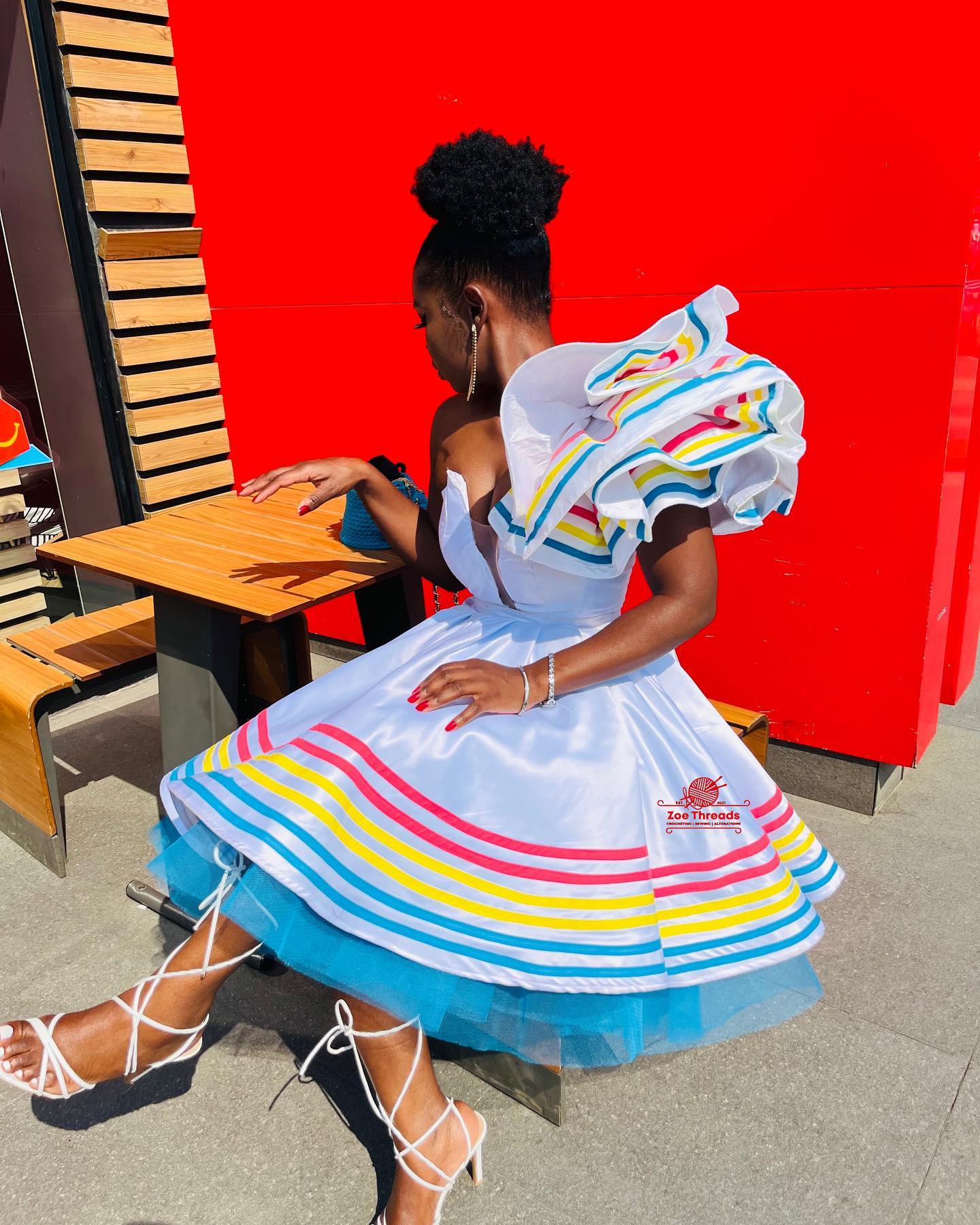


Economic Impact
The economic impact of preserving and promoting Sepedi traditional attire
Sepedi traditional attire holds significant cultural and economic value that should be preserved and promoted. By doing so, it can have a positive impact on the economy in several ways.
- Job Creation: Preserving and promoting Sepedi traditional attire can create employment opportunities for local artisans, designers, and craftsmen. This not only helps to preserve their skills and traditions but also boosts the local economy by providing income and livelihoods.
- Tourism: Traditional attire plays a crucial role in attracting tourists who are interested in experiencing different cultures. By preserving and promoting Sepedi traditional attire, it can become a unique selling point for tourism in the region, leading to increased tourism revenue and economic growth.
- Small Business Development: The production and sale of Sepedi traditional attire can support the growth of small businesses. Local entrepreneurs can establish clothing boutiques, online stores, or participate in craft markets, contributing to the local economy and creating a sustainable business ecosystem.
- Cultural Heritage: Preserving and promoting Sepedi traditional attire helps to maintain cultural identity and heritage. This not only instills a sense of pride among the community but also attracts cultural enthusiasts who are willing to pay a premium for authentic traditional attire, further boosting economic opportunities.
In conclusion, preserving and promoting Sepedi traditional attire has a significant economic impact. It creates jobs, boosts tourism, supports small businesses, and preserves cultural heritage. By recognizing its value and investing in its promotion, we can ensure the sustainability and growth of this important aspect of Sepedi culture.
Social Cohesion
How Sepedi traditional attire promotes social cohesion within the community
Sepedi traditional attire plays a significant role in promoting social cohesion within the community. By preserving and promoting this attire, individuals are able to connect with their cultural heritage and strengthen their sense of belonging. Wearing traditional attire during special occasions and events fosters a sense of unity and pride among community members. It also serves as a visual representation of shared values, traditions, and history. Through the preservation and promotion of Sepedi traditional attire, communities can celebrate their diversity and create a sense of solidarity. This not only enhances social interactions but also contributes to the overall well-being and cultural richness of the community.
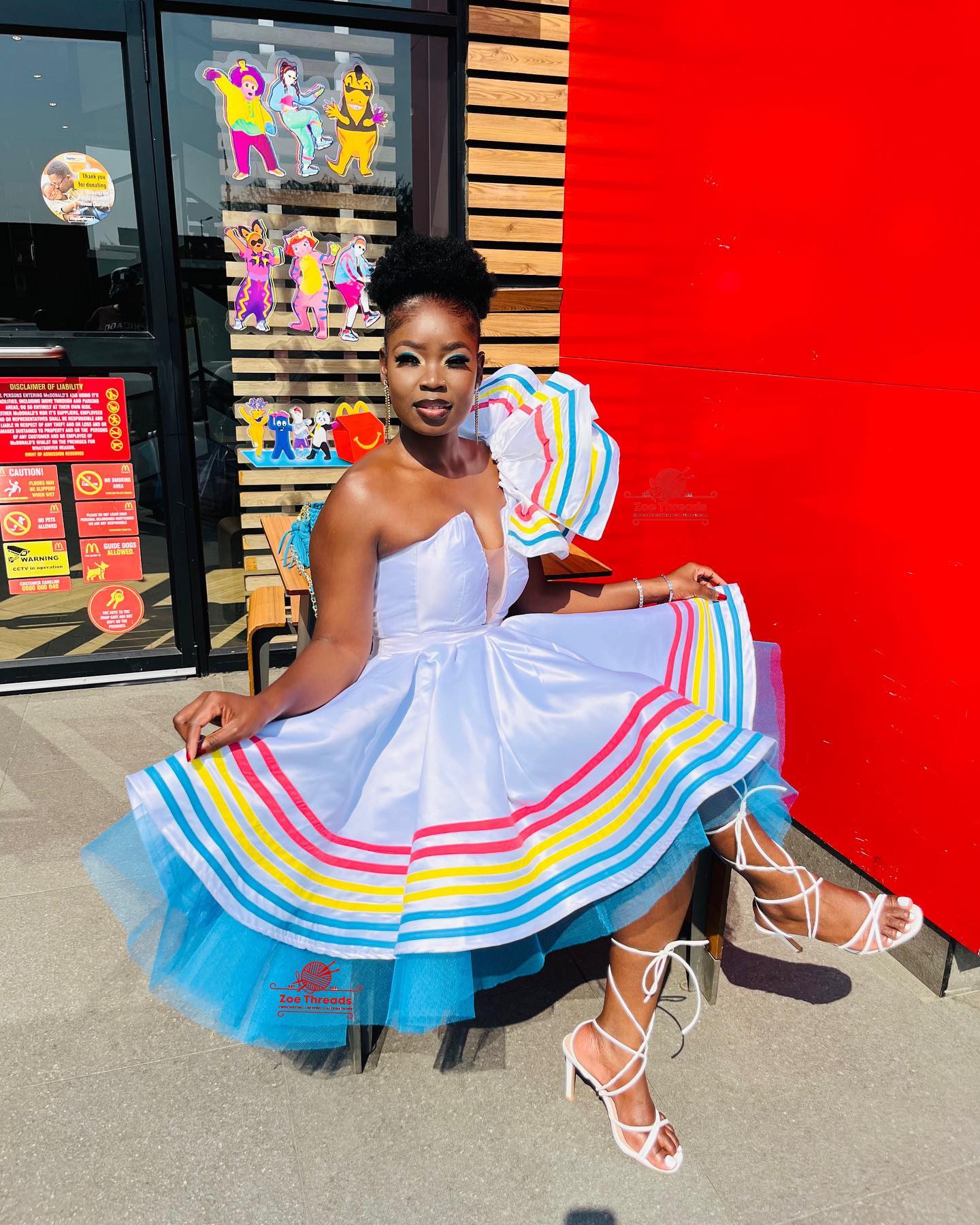

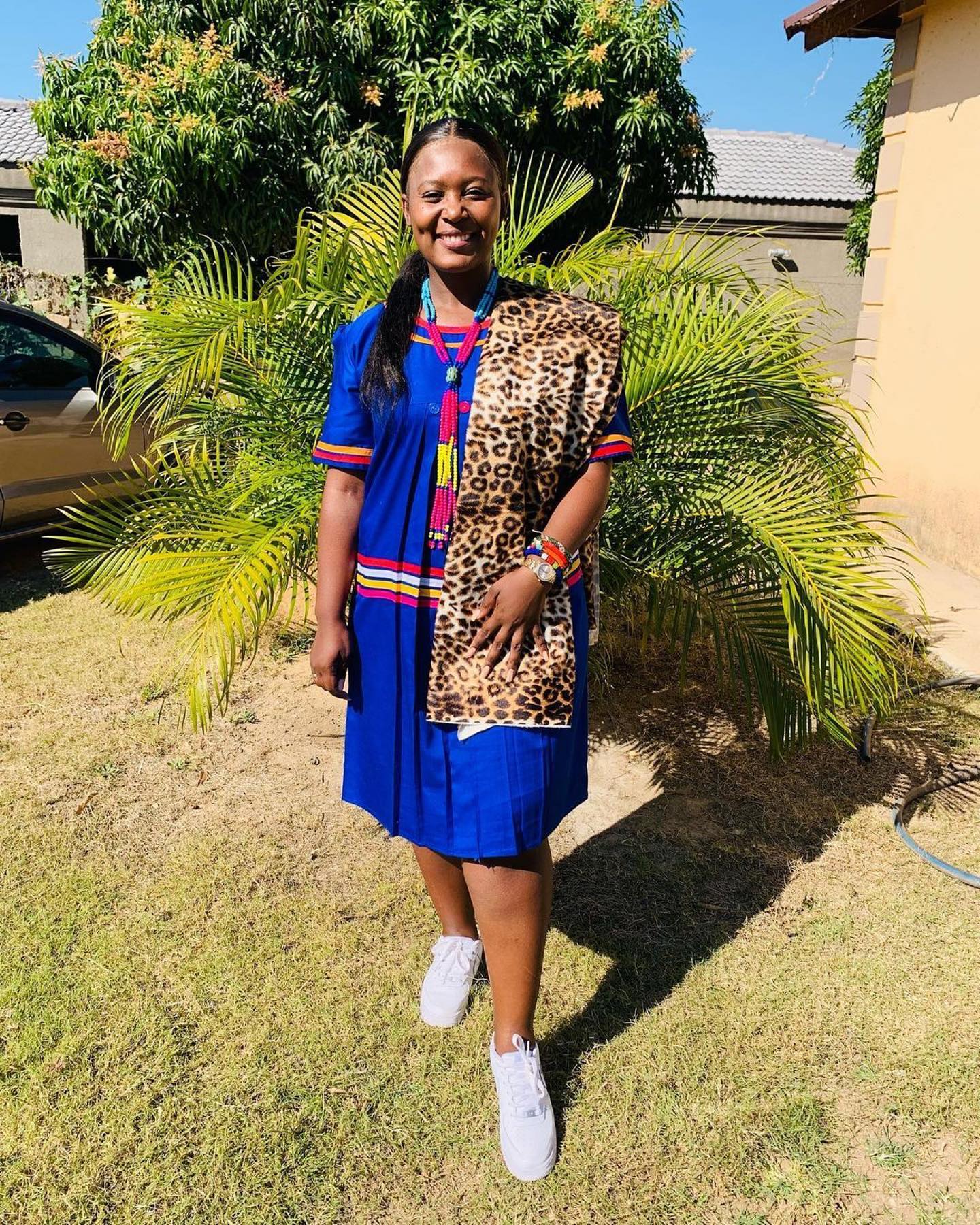
Challenges and Solutions
Challenges faced in preserving and promoting Sepedi traditional attire and potential solutions
Preserving and promoting Sepedi traditional attire is crucial for preserving cultural heritage and identity. However, there are challenges that need to be addressed.
- Lack of awareness: Many people, especially the younger generation, may not be aware of the significance and beauty of Sepedi traditional attire.
Solution: Education and awareness campaigns can be organized to showcase the importance of preserving and promoting this attire. This can include workshops, exhibitions, and cultural events.
- Influence of Western fashion: With the rise of Western fashion trends, there is a risk of traditional attire being overshadowed and forgotten.
Solution: Emphasizing the uniqueness and beauty of Sepedi traditional attire can help counter the influence of Western fashion. Collaborations with fashion designers and influencers can also help in showcasing the modern adaptations of traditional attire.
- Limited access: Availability of authentic Sepedi traditional attire may be limited, making it difficult for people to access and wear them.
Solution: Encouraging local artisans and designers to create and sell authentic Sepedi traditional attire can increase accessibility. Online platforms can also be utilized to reach a wider audience.
- Changing lifestyles: Modern lifestyles may discourage the wearing of traditional attire on a regular basis.
Solution: Promoting the integration of Sepedi traditional attire into special occasions, celebrations, and cultural events can help keep the tradition alive while accommodating modern lifestyles.
By addressing these challenges and implementing potential solutions, we can ensure the preservation and promotion of Sepedi traditional attire for future generations to appreciate and embrace.


Conclusion
The importance of preserving and promoting Sepedi traditional attire for future generations
Preserving and promoting Sepedi traditional attire is crucial for several reasons. Firstly, it helps to maintain and celebrate the rich cultural heritage of the Sepedi people. Traditional attire is a visual representation of their history, customs, and identity.
Secondly, by preserving and promoting Sepedi traditional attire, future generations can learn about their roots and develop a sense of pride in their heritage. It allows them to connect with their ancestors and understand the significance of cultural traditions.
Additionally, preserving and promoting Sepedi traditional attire contributes to the local economy. Many artisans and craftsmen rely on the production and sale of traditional clothing as a source of income. By supporting these businesses, we can help sustain the cultural practices associated with traditional attire.
Furthermore, promoting Sepedi traditional attire can also foster cultural exchange and appreciation. Through events, exhibitions, and collaborations, people from different backgrounds can learn about Sepedi culture and develop a deeper understanding and respect for its traditions.
In conclusion, preserving and promoting Sepedi traditional attire is essential for maintaining cultural heritage, fostering pride in one’s roots, supporting local economies, and promoting cultural exchange. By doing so, we ensure that future generations can continue to embrace and celebrate this important aspect of Sepedi culture.

















Comments are closed.